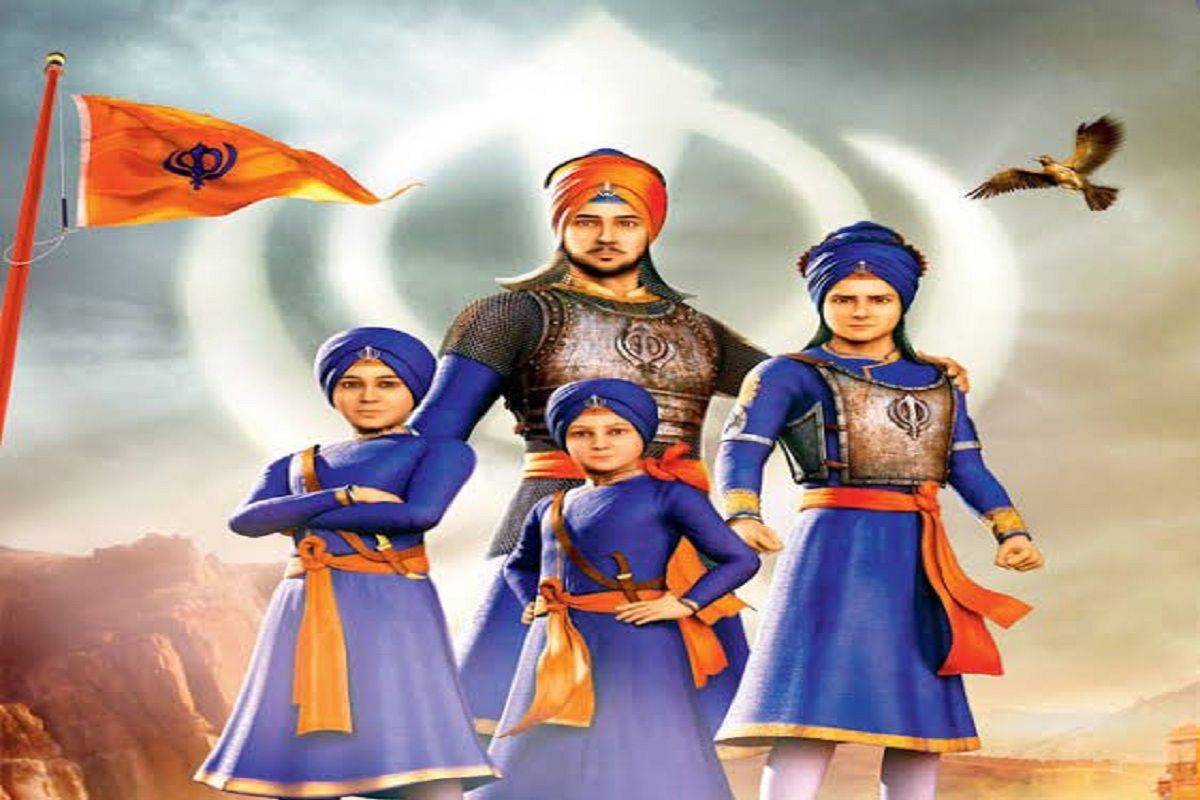Updated on December 27th, 2024
The martyrdom of the Chaar Sahibzaade, the four sons of Guru Gobind Singh Ji, represents a significant chapter in Sikh history. Each December, Sikhs worldwide honor their sacrifice, which epitomizes courage, selflessness, and unwavering faith against oppression. In this blog, we will explore the historical background of these events, their importance, and the lasting legacy they leave behind, supported by historical accounts and scholarly research.
Historical Context
The late 17th and early 18th centuries were a period marked by severe oppression and conflict in India, particularly under Mughal Emperor Aurangzeb, whose policies targeted religious minorities, including Sikhs. The tensions led to various conflicts, with Guru Gobind Singh Ji emerging as a pivotal figure advocating for justice and equality. According to historian Ganda Singh, in the history of the Sikhs, the Guru Sahib transformed the Sikh community into a robust martial society, emphasizing the importance of standing up against oppression and injustice.
On the night of December 20, 1704, Guru Gobind Singh Ji, accompanied by his family, including his four sons—Ajit Singh, Jujhar Singh, Zorawar Singh, and Fateh Singh—alongside Mata Gujri Ji and Mata Jeeto Ji, embarked on a journey from Anandpur Sahib towards Ropar, after a long siege by Mughal forces.
The Tragedy of Pariwar Vichhora
As the entourage made its way, Mughal troops launched a surprise attack on December 21, breaking their promises and agreements. This ambush occurred near the Sarsa River, approximately 25 kilometres from Anandpur Sahib, separating the Guru’s family and followers. This tragic moment is honored at Gurudwara Pariwar Vichhora Sahib.

In his work, Sikh History and Literature, historian Harjinder Singh Dilgeer recounts this painful episode, emphasizing its emotional weight for the Sikh community. The loss of family and fellowship during such a crucial moment set the stage for the subsequent heroic battles unfolding.
The Battle of Chamkaur Sahib
After the disbandment, Guru Gobind Singh Ji led his two elder sons and a small group of devoted Sikhs to Chamkaur Sahib. On December 22, 1704, the Battle of Chamkaur Sahib commenced. This battle became a defining moment of valour; Ajit Singh, aged 18, and Jujhar Singh, aged 14, courageously fought against an overwhelming Mughal force estimated at 100,000 soldiers.

Historian Khushwant Singh in A History of the Sikhs paints a vivid picture of this battle, detailing how the Sahibzaade and their fellow warriors exemplified the Sikh spirit of sacrifice and bravery. They laid down their lives in the face of impossible odds, a profound illustration of their commitment to their faith and principles.
In a daring and sacrificial act, another Sikh named Sangat Singh disguised himself in the Guru’s attire to mislead the Mughal forces, which allowed Guru Gobind Singh Ji to escape safely. The willingness to face death instead of yielding to oppression is a theme frequently highlighted in Sikh literature, underscoring the ultimate sacrifice made for the greater good.
Separation and Betrayal
After the battle, the youngest Sahibzaade, Zorawar and Fateh Singh, and their grandmother Mata Gujri Ji, were inadvertently separated from the main group. They sought refuge with Gangoo, a former servant who betrayed their trust out of greed. He disclosed their whereabouts to the Mughal authorities, leading to their capture.
The Sahibzaade were imprisoned in the Thanda Burj (Open Tower) under harsh and inhumane conditions. Historian Bhai Vir Singh, in his book Raja Vikram Singh, vividly depicts the cruel treatment the young Sahibzaade endured, highlighting their remarkable resilience and steadfast commitment to their faith, even in the face of impending death.
Brought before Wazir Khan, the governor of Sirhind, the Sahibzaade were offered a chance to save themselves by converting to Islam. Their resolute refusal is a powerful testament to their faith; it has been immortalized in Sikh teachings and songs. Wazir Khan’s brutal order to brick them alive remains one of the most heartrending acts of martyrdom recorded in history.
The Martyrdom of the Chotta Sahibzaade
On December 27, 1704, a heinous act occurred in Sirhind, leading to the martyrdom of the youngest Sahibzaade, Zorawar and Fateh Singh, at the tender ages of 6 and 9. This brutal execution, underlined by the sheer cruelty of the Mughal regime, is commemorated at Jyoti Swaroop Gurudwara Sahib, which has become a site of pilgrimage and remembrance.
When Mata Gujri Ji learned of her grandsons’ martyrdom, she was overwhelmed with grief and is said to have passed away that same day, demonstrating the immense personal cost of the tragedy.
Historian Sukhbir Singh in Martyrdom in Sikh History highlights the profound impact of these martyrs on the Sikh psyche. Their sacrifice is not merely a historical footnote; it represents the epitome of loyalty and dedication to one’s faith and the community.
Legacy and Commemoration
The legacy of the Chaar Sahibzaade serves as a cornerstone of Sikh identity, embodying the principles of sacrifice, valour, and faith. Each December, Sikhs across the globe observe Shaheedi Jor Mela, a monumental event honouring the memory and sacrifices of these young heroes.
As Amarjit Singh discusses in Sikh Heritage and History, these commemorations reinforce the community’s resilience and collective memory, ensuring that the stories of the Sahibzaade carry forward through generations. Their martyrdom continues to inspire not just Sikhs but all who value justice, courage, and the pursuit of freedom.
In conclusion, the martyrdom of the Chaar Sahibzaade is a powerful reminder of the lengths to which individuals will go to uphold their beliefs against oppression and tyranny. Their sacrifice is woven into the fabric of Sikh history, inspiring future generations to uphold the ideals of truth, justice, and righteousness.






No Comment